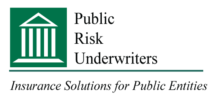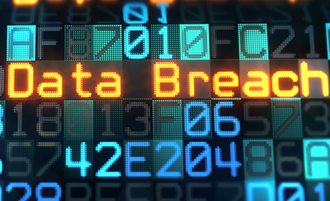With cyber crime at an all-time high, and many organizations experiencing severe cyber attacks, it’s important to know ways to prevent cyber attacks and keep your organization’s information safe. According to Blueprint, protecting your systems is not as complicated as it may sound. Use these tips and tools to help protect your organization’s valuable assets.
Educate and train employees on security principles. Establish basic security practices and policies for employees, such as requiring strong passwords and establishing appropriate Internet use guidelines, that detail penalties for violating company cybersecurity policies.
2. Protect information, computers, and networks from cyber attacks. Keep clean machines: having the latest security software, web browser and operating system are the best defenses against viruses, malware and other online threats. Set antivirus software to run a scan after each update.
3. Provide firewall security for your Internet connection. A firewall is a set of related programs that prevent outsiders from accessing data on a private network. Make sure the operating system’s firewall is enabled or install free firewall software available online. If employees work from home, ensure that their home system(s) are protected by a firewall.
4. Create a mobile device action plan. Require users to password protect their devices, encrypt their data and install security apps to prevent criminals from stealing information while the phone is on public networks. Be sure to set reporting procedures for lost or stolen equipment.
5. Make backup copies of important business data and information. Regularly backup the data on all computers. Critical data includes word processing documents, electronic spreadsheets, databases, financial files, human resources files and accounts receivable/payable files. Backup data automatically if possible, or at least weekly and store the copies either offsite or in the Cloud.
6. Control physical access to your computers and create user accounts for each employee. Prevent access or use of business computers by unauthorized individuals. Laptops can be particularly easy targets for theft or can be lost, so lock them up when unattended. Make sure to create a separate user account for each employee and require strong passwords. Only give administrative privileges to trusted IT staff and key personnel.
7. Secure your Wi-Fi networks. If you have a Wi-Fi network for your workplace, make sure it is secure, encrypted and hidden. To hide your Wi-Fi network, set up your wireless access point or router so it does not broadcast the network name, known as the Service Set Identifier (SSID). Password protect access to the router.
8. Employ best practices on payment cards. You may also have additional security obligations pursuant to agreements with your bank or processor. Isolate payment systems from other, less secure programs and don’t use the same computer to process payments and surf the Internet.
9. Limit employee access to data and information, and limit authority to install software. Do not provide any one employee with access to all data systems. Employees should only be given access to the specific data systems that they need for their jobs and should not be able to install any software without permission.
10. Passwords and authentication. Require employees to use unique passwords and change passwords every three months. Use multifactor authentication that requires additional information beyond a password to gain entry. Check with your vendors that handle sensitive data, especially financial institutions, to see if they offer multifactor authentication for your account.
Related: Workplace Technology Trends: Cybersecurity and Recruiting
Online resources
There are several cyber resources available online. The Department of Homeland Security’s Critical Infrastructure Cyber Community Voluntary Program (C3) provides cybersecurity resources to operators of critical infrastructure for state and local governments and provides webinars, publications and best practices.
Cybersecurity awareness courses
Preferred offers four Vector Solutions courses on cyber awareness. Educating your associates is one of the best ways to prevent a cyber attack. Cyber awareness improves the awareness of threats to online security and provides best practices for safeguarding data. As always, these courses are available to Preferred members free of charge:
- Cybersecurity Awareness for Employees: Classifying and Safeguarding Data for Corporate and Personal Use
- Cybersecurity Awareness for Employees: End User Best Practices
- Cybersecurity Awareness for Employees: Security Awareness Essentials
- Cybersecurity Awareness for Employees: Social Engineering
Preferred also offers access to the Preferred Risk Management Resources Center (PRMRC) to all members who place their EPLI coverage with Preferred. The RMRC includes several resources:
- Breach HealthCheck: Measurable data breach exposure and protection with instant feedback
- Unlimited access to cybersecurity experts via phone or email
- Privacy and security templates including a customizable incident response plan (IRP), which can be tailored to meet industry and regulatory requirements
- Resources for keeping staff up to date on a range of issues related to privacy, data security and compliance
- Latest news and events regarding data breaches, regulations, cyber threats and protective technologies
For more information on these and other cybersecurity resources please contact your Preferred Loss Control Consultant.







